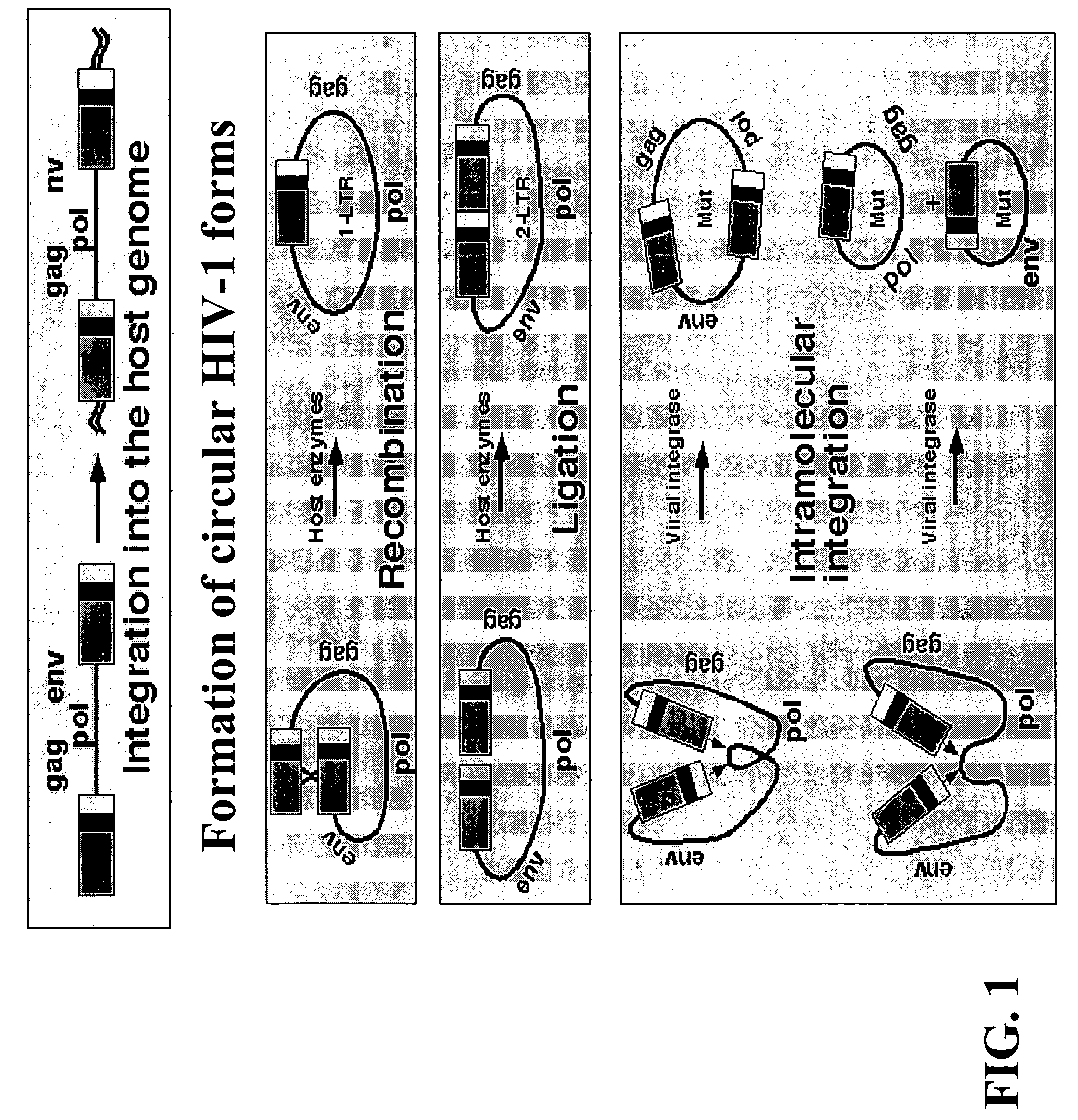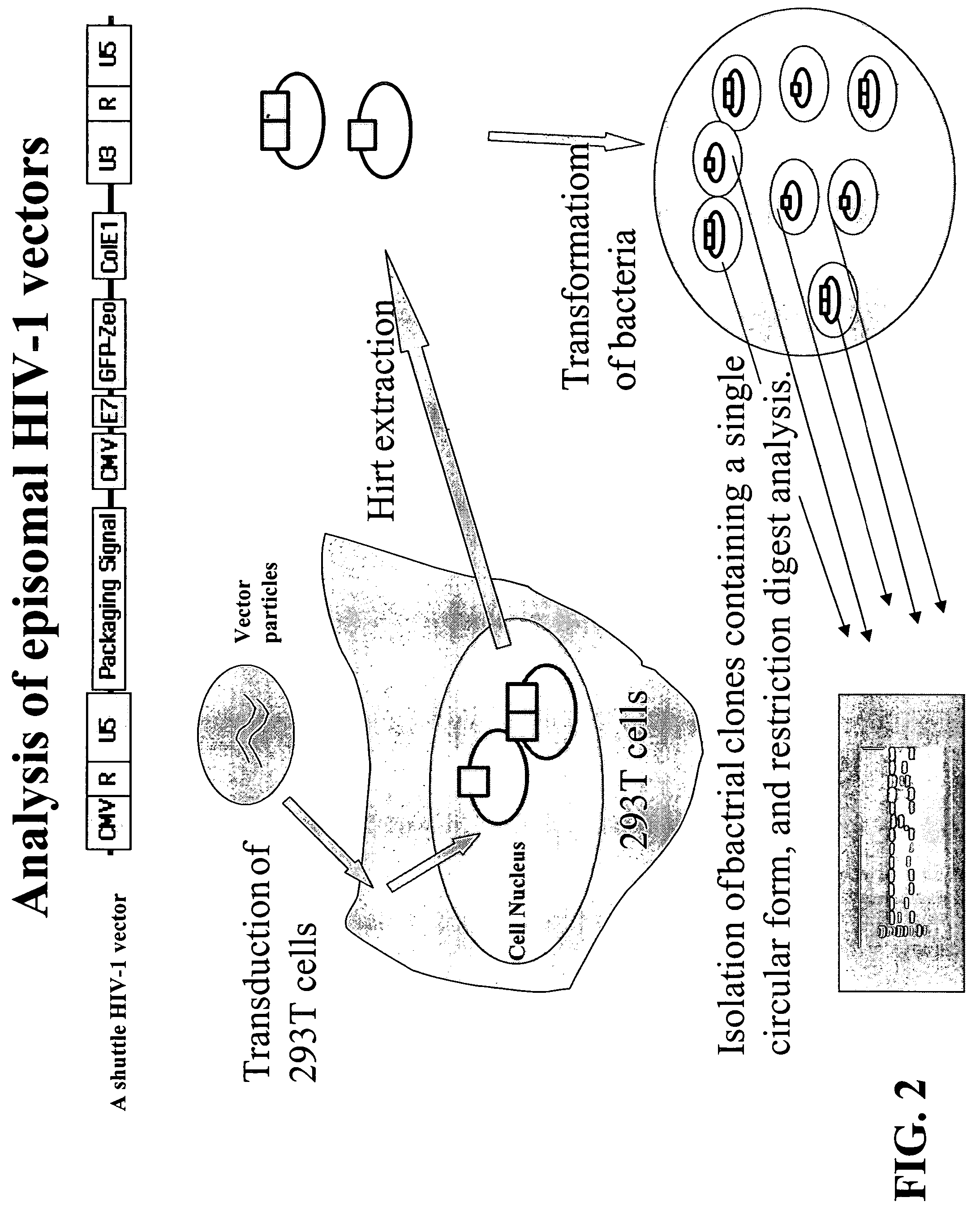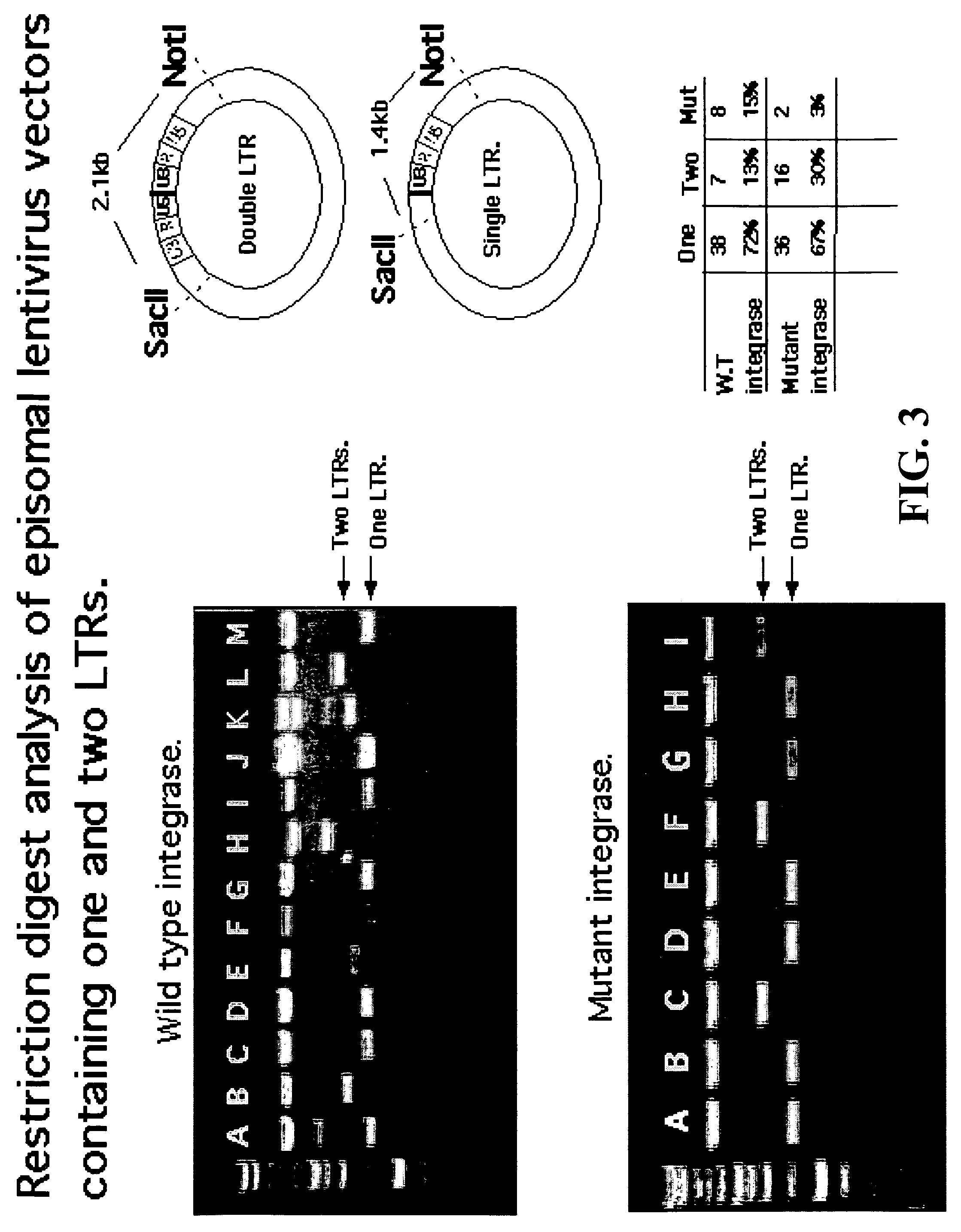Single LTR lentivirus vector
a technology of lentivirus and vector, applied in the field of new recombinant retrovirus constructs, can solve the problem of reducing the ability to form functional recombinant particles
- Summary
- Abstract
- Description
- Claims
- Application Information
AI Technical Summary
Benefits of technology
Problems solved by technology
Method used
Image
Examples
example i
[0082]To facilitate the characterization of the mechanism involved in the formation of non-integrated circular HIV-1 DNA forms, the present invention provides an HIV-1 shuttle vector (pTK303) which allows for the clonal isolation of circular vector DNA in bacteria. As shown in FIG. 6, the vector contains the GFP / Zeocin fusion protein gene under the control of the CMV and the bacterial E7 promoters. The ColE1 bacterial origin of replication that supports a plasmid-like replication in bacteria was also incorporated between the LTRs of the vector. High titers of vector particles were generated by co-transfecting the pTK303 DNA construct with HIV-1 packaging and a VSV-G envelope expression cassettes into 293T cells. Although transduction efficiency of the shuttle vector particles was found comparable to that obtained from traditional HIV-1 vectors, the level of transgene expression as determined by FACS analysis, was lower than that observed from a traditional CMV promoter containing HI...
example ii
[0093]The incorporation of a bacterial origin of replication and an antibiotic resistance marker gene into a single-LTR retroviral vector cassette facilitated the isolation of integrated vector DNA in bacterial clones. This feature allows for the single-LTR vector system as it allows for efficient recovery of functional cDNAs. To optimize the single-LTR HIV-1 vector system for functional genomic applications, a LoxP site and an Sbf1 restriction site were incorporated into the U3 region of a SIN single-LTR HIV-1 vector. Expression of the GFP-blastocidin fuision gene from this novel vector (pTK589) was under the control of a CMV promoter. Vector particles were generated at a titer of 1–2×106 IU / ml, and conferred blastocidin resistance to transduced 293T cells. To recover and isolate vector DNA, 2×106 blastocidin-resistant cells were transfected with the Cre expression plasmid pTK601. At 12 hr post transfection episomal circular vector DNA was purified by Hirt extraction and used to tr...
example iii
Self Inactivating Vectors
[0094]The incorporation of the Self Inactivating Vector (SIN) feature into the single-LTR based vector system includes the development of a conditional-SIN vector, such as pTK474, in which the parental U3 region containing the HIV-1 enhancer / promoter sequence was replaced with a tetracycline-inducible promoter. The conditional SIN single-LTR vector vTK474 was generated by transient transfection in the presence of a tTA expression cassette. A vector titer of 2–3×106 IU / ml was determined by scoring GFP expression following serial dilution on 293T cells. Attempts to rescue vector particles by transfecting vector-transduced 293T cells with a VSV-G envelope and an HIV-1 packaging construct yielded a titer of 8–12×102 IU / ml. In comparison, a similar rescuing procedure using 293T cells transduced with the non-SIN vector vTK469 yielded titer of 2–3×106 IU / ml, thus indicating that the conditional-SIN single-LTR vector retained its SIN feature following integration in...
PUM
| Property | Measurement | Unit |
|---|---|---|
| nucleic acid | aaaaa | aaaaa |
| length | aaaaa | aaaaa |
| resistance | aaaaa | aaaaa |
Abstract
Description
Claims
Application Information
 Login to View More
Login to View More - R&D
- Intellectual Property
- Life Sciences
- Materials
- Tech Scout
- Unparalleled Data Quality
- Higher Quality Content
- 60% Fewer Hallucinations
Browse by: Latest US Patents, China's latest patents, Technical Efficacy Thesaurus, Application Domain, Technology Topic, Popular Technical Reports.
© 2025 PatSnap. All rights reserved.Legal|Privacy policy|Modern Slavery Act Transparency Statement|Sitemap|About US| Contact US: help@patsnap.com



